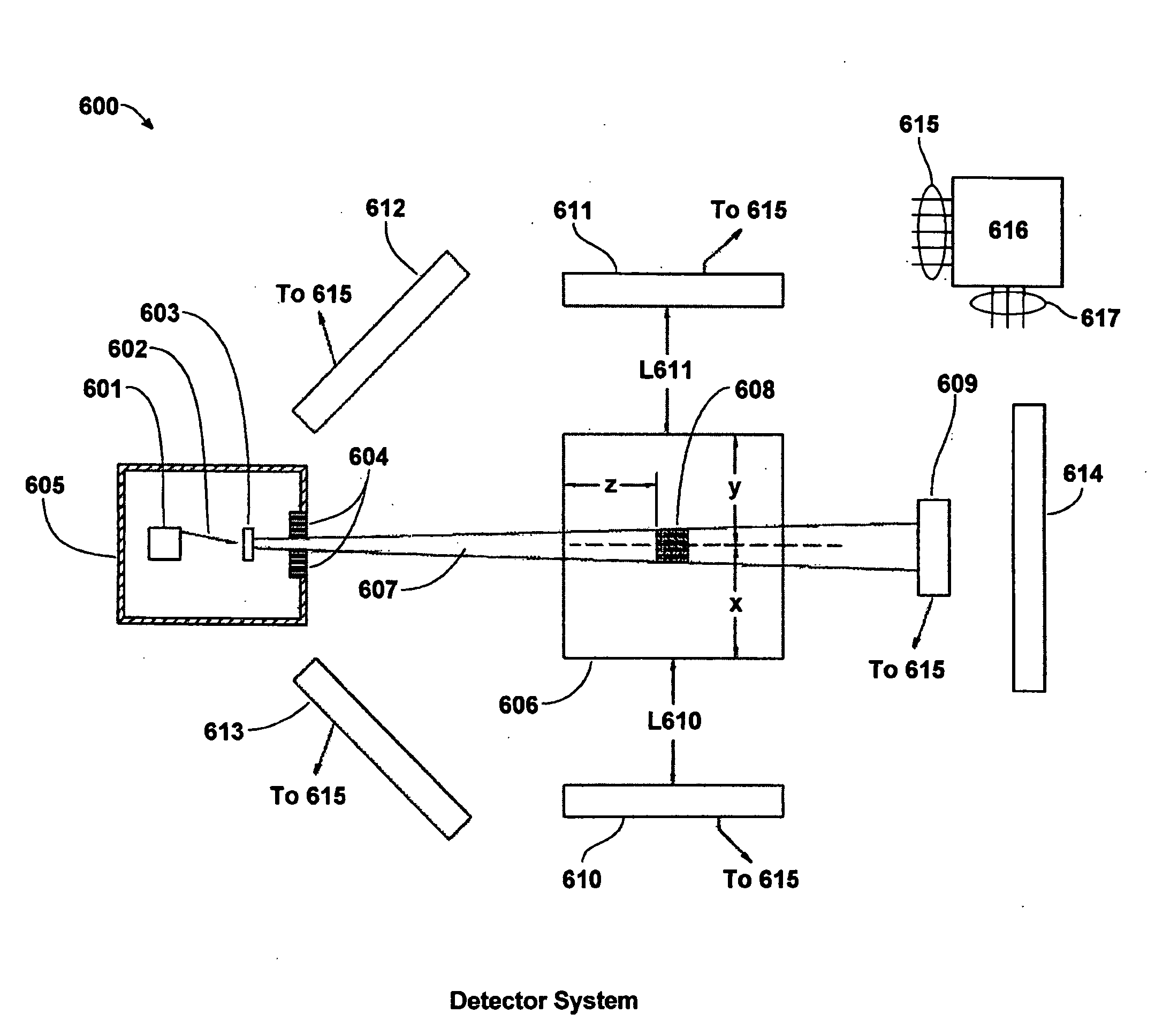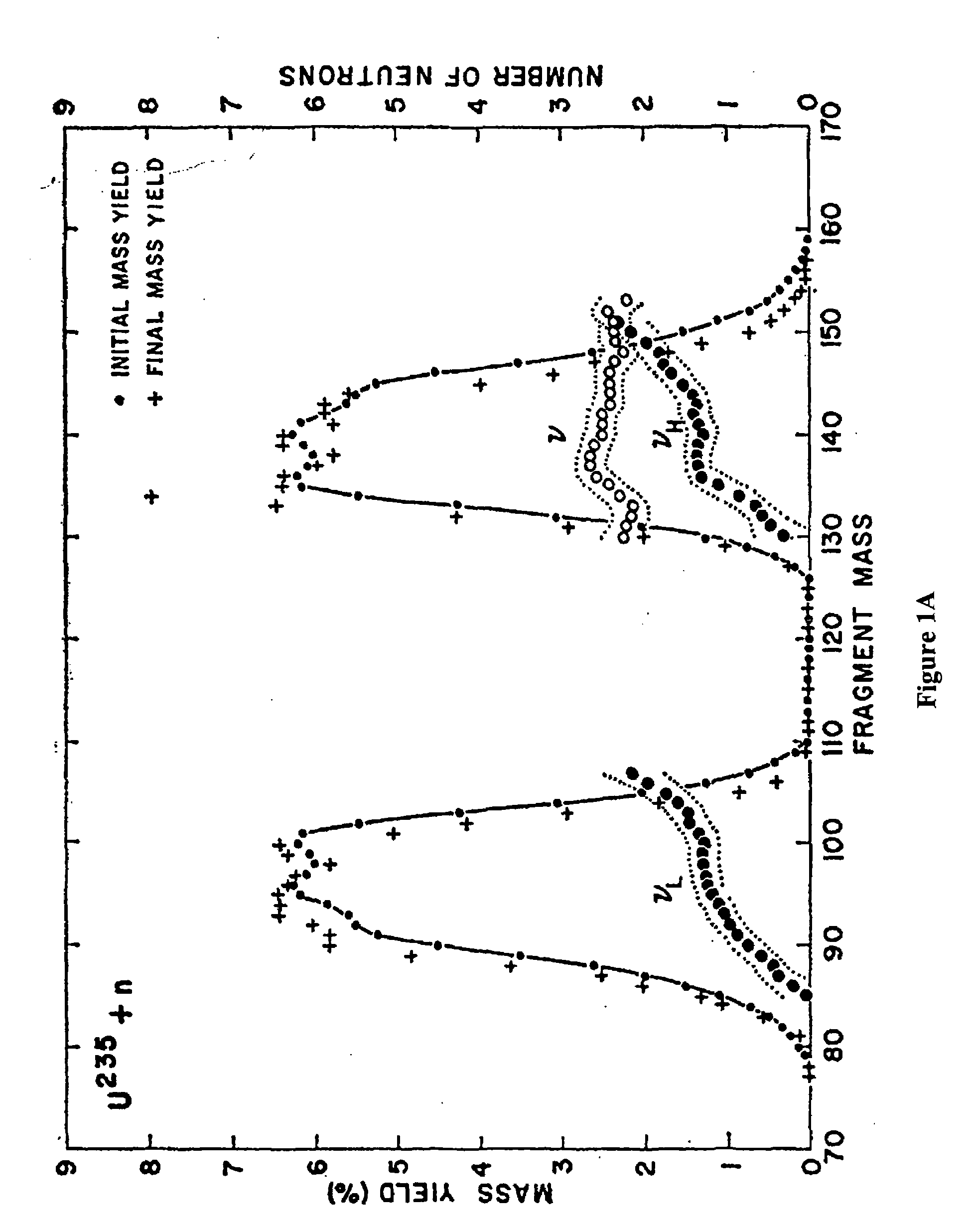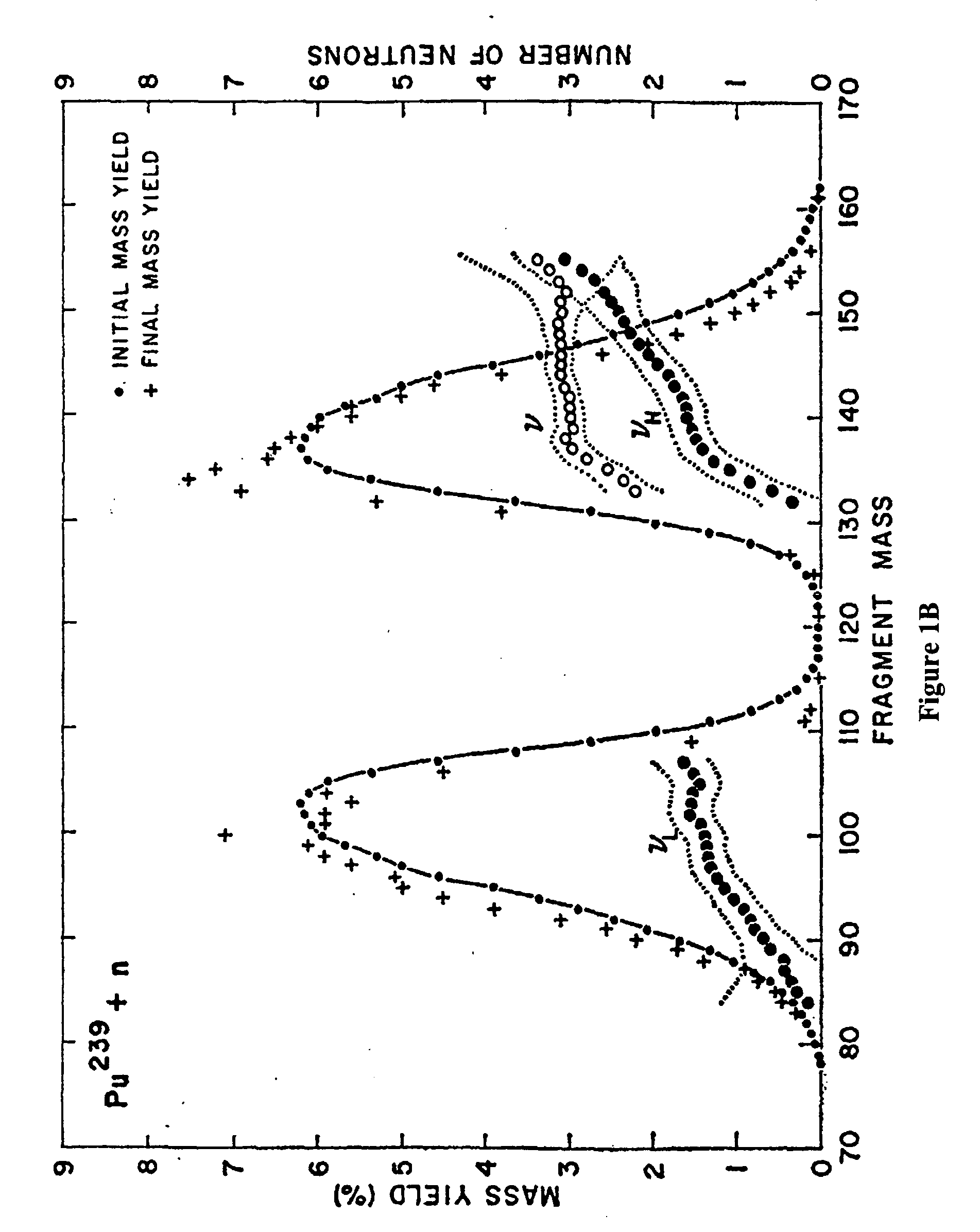Non-intrusive method to identify presence of nuclear materials using energetic prompt neutrons from neutron-induced fission
a neutron-induced fission and nuclear material technology, applied in radiation particle tracking, instruments, therapy, etc., can solve the problem that no other photon-induced process can generate neutrons with these energies, and achieve the effect of reducing false positive rate and speeding up scan times
- Summary
- Abstract
- Description
- Claims
- Application Information
AI Technical Summary
Benefits of technology
Problems solved by technology
Method used
Image
Examples
Embodiment Construction
[0041]Fission is a complex process that has been the subject of many theoretical and experimental studies. (See generally Bohr and Mottelson, “Nuclear Structure”, 1998, World Scientific Publishing Co. Pte. Ltd. Singapore, and references therein). However, common empirically established features imply certain general regularities of the process independent of nucleus or initiating particle.
[0042]When fission is spontaneous, initiated by low energy neutrons or by the absorption of photons near the threshold for the (γ, f) process, the dominant mode of fission is the breaking apart of the nucleus into two fragments of unequal masses. These unequal masses are in the regions of nucleon numbers 95 and 140 for 235U and in similar regions for other fissionable nuclei. The fragments are accelerated by the strong Coulomb repulsion of their charges (Z1, Z2) and gain kinetic energy ranging approximately from 160 to 180 MeV, depending on the nucleus undergoing fission. Most of this Coulomb energ...
PUM
 Login to View More
Login to View More Abstract
Description
Claims
Application Information
 Login to View More
Login to View More - R&D
- Intellectual Property
- Life Sciences
- Materials
- Tech Scout
- Unparalleled Data Quality
- Higher Quality Content
- 60% Fewer Hallucinations
Browse by: Latest US Patents, China's latest patents, Technical Efficacy Thesaurus, Application Domain, Technology Topic, Popular Technical Reports.
© 2025 PatSnap. All rights reserved.Legal|Privacy policy|Modern Slavery Act Transparency Statement|Sitemap|About US| Contact US: help@patsnap.com



